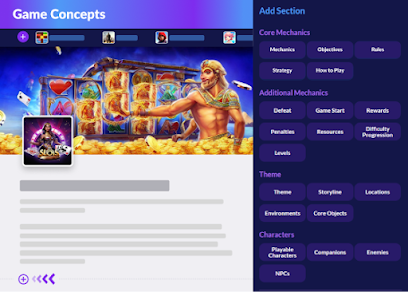In recent years, the gaming industry has experienced an unprecedented technological revolution, and one of the most notable advancements is the use of AI-powered hits. These innovations are pushing the boundaries of game design, elevating the visuals, gameplay mechanics, and player experience. One of the most exciting aspects of AI’s role in gaming is its ability to enhance the aesthetics and look of games in ways that were previously unimaginable. Let’s dive into how AI-powered hits are changing the game and how Ideation Images and the Best AI Games are redefining the landscape of gaming.
The Role of AI-Powered Hits in Gaming
AI has long been used in gaming for non-player character (NPC) behavior and procedural content generation, but today, its role is expanding. The introduction of AI-powered hits is specifically revolutionizing how games look. By leveraging sophisticated algorithms, AI can now help create hyper-realistic textures, lighting effects, and animations that were once painstakingly crafted by hand. This means faster development times and the ability to create much more detailed and dynamic visuals.
For instance, AI can automatically generate lighting effects that adapt to the environment, such as the soft glow of moonlight in a forest or the harsh neon lights of a futuristic city. This creates a more immersive experience for the player. AI can also apply texture mapping and fine details that would otherwise require hours of manual labor by artists, helping game studios produce visually stunning worlds in less time.
The Importance of Ideation Images in Game Design
One crucial aspect of game development is the initial ideation phase, where developers brainstorm concepts and visuals. Ideation images are the first visual representations of a game’s environment, characters, and style. Traditionally, these images have been hand-drawn or created through digital tools by concept artists. However, with AI-driven tools, the process of generating ideation images has been enhanced dramatically.
AI-powered tools can take a simple text description and turn it into a detailed ideation image, providing developers with multiple options to explore in a fraction of the time it would take to create by hand. This rapid prototyping is not only saving time but also enabling developers to experiment with a wider range of ideas and possibilities, which can lead to more innovative and engaging games.
Moreover, AI is improving the refinement of these ideation images. Once a rough concept is created, AI can help adjust colors, lighting, and textures in real-time, allowing artists to focus on higher-level creative decisions rather than laboring over every detail. This streamlined approach ensures that the final product is both visually appealing and conceptually sound.
The Best AI Games: What to Look For
The best AI games are those that successfully integrate artificial intelligence into both the gameplay and the visual design. Games that leverage AI-powered hits in graphics are pushing the envelope of what's possible in terms of visual fidelity. Here’s a look at some of the features that make AI-driven games stand out:
Procedural Generation – AI can be used to create procedurally generated environments, giving players a unique experience every time they play. This dynamic approach to level design not only increases replay value but also allows developers to craft massive, sprawling worlds without manually creating each individual piece.
Adaptive AI Behavior – Beyond just making games look better, AI is also enhancing gameplay through adaptive behavior. NPCs in best AI games are no longer restricted by static behavior patterns. Instead, they learn from the player’s actions and adapt accordingly, making gameplay more challenging and immersive.
Enhanced Animation – AI-driven animation tools are making character movements more realistic. Through machine learning, AI can predict natural movements and even adjust in real-time based on player input, resulting in more fluid and lifelike animations.
Visual Enhancement Tools – AI isn’t just about gameplay; it's also revolutionizing visual effects. From photorealistic textures to advanced lighting and shadow effects, AI tools are helping game developers create visually captivating experiences without the time and resource constraints of traditional methods.
Some of the best AI games on the market today include titles like Cyberpunk 2077, Red Dead Redemption 2, and Horizon Zero Dawn. These games feature groundbreaking AI techniques that create dynamic worlds and incredibly detailed visuals, offering players a more immersive and engaging experience.
Conclusion
AI-powered hits are rapidly changing the way games look, and the possibilities for this technology in gaming are nearly limitless. Whether it's enhancing textures, refining animations, or generating detailed ideation images, AI is allowing developers to create more visually stunning and immersive worlds. As AI continues to evolve, we can expect to see even more innovative features in the best AI games, from adaptive NPCs to more realistic environmental effects. The future of gaming is here, and it’s powered by artificial intelligence. If you're a gamer or a developer, now is the perfect time to embrace the potential of AI in game design.
By leveraging AI, studios are not only improving the visual quality of their games but also pushing the boundaries of creativity and innovation. So, the next time you boot up a game, take a moment to appreciate the cutting-edge AI technology that’s making your virtual worlds look better than ever before.






.jpeg)

.jpeg)
